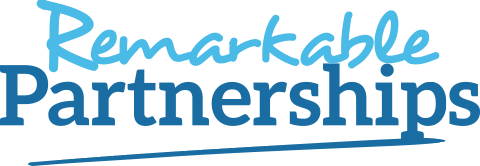As Daniel Priestley says – “you get what you pitch for, and you’re always pitching.”
We love this approach. Pitching is a compelling way to inform or persuade others and it is part of our natural conversation. We pitch our ideas and thoughts to other people daily. It can be as simple as deciding where to go for breakfast, or as complex as asking others to invest their time and money to support our cause. To be a truly remarkable corporate fundraiser, you need to nail your pitches – both the formal ones, and the every day. So how can you take your pitch to the next level?
Interact with your audience
When presenting, you want to ensure that you have your audience’s full attention. With more and more of our meetings happening online, it can be all too easy for your audience’s mind to wander to their inbox.
By asking your audience to interact with you right at the start, you break this temptation. You also make it clear that this isn’t going to be a normal sales pitch – you’re going to involve them.
When the Sleep Charity pitch to prospects, they ask the people in the room to reflect on how they feel if they’ve had a bad night’s sleep – writing down the one word that comes to mind. They might say angry, or forgetful, or tearful. Once they’ve shared all these feelings, the Sleep Charity invite them to think how they would feel if that was every night.
With this strong emotional connection established, they know their audience are fully focused – it often feels like they’ve won the partnership before they’ve even begun.
‘Prop’ your pitch
The well-timed use of a well-chosen prop can make a big impression on your audience. Props can help a presentation in several ways:
- They can have an emotional impact.
- They can be effective metaphors.
- They are memorable.
In their book Switch Chip and Dan Heath tell the story of Jon Stegner, an employee at a large manufacturing company who wanted to show executives the enormous amount of money that was wasted annually because of poor purchasing habits.
Stegner needed a compelling example of the company’s poor purchasing habits. So he got an intern to investigate one item that the company purchased: work gloves. The intern found that the company’s factories were purchasing 424 different kinds of gloves from different suppliers and for different prices.
Stegner collected one sample of each of the 424 different types of gloves and tagged each with the price the company paid. The gloves were then brought to a boardroom and piled up on the conference table. Stegner invited all the presidents of the company’s division presidents to come visit his “Glove Shrine”.
In their book, the Heath brothers write:
What they saw was a large expensive table, normally clean or with a few papers, now stacked high with gloves. Each of our executives stared at this display for a minute… Then they walked around the table…. They could see the prices. They looked at two gloves that seemed exactly alike, yet one was marked $3.22 and the other $10.55. It’s a rare event when these people don’t have anything to say. But that day, they just stood with their mouths gaping.
The company changed its purchasing process and saved a great deal of money.
Such is the power of a well-used prop.
Tell a powerful story
Through years of research, world famous psychologist Daniel Kahneman learned that our emotional brain works 2,000 times faster than our logical brain.
This means that we make decisions for emotional reasons, then justify them with logic afterwards. The number one way to engage your audience emotionally is to tell a story.
You can see our recent blog on the power of stories here. When telling a story, we recommend you focus on one individual. For example, rather than telling a story of a family, focus on one of the parents or the child. This makes it much easier to imagine their emotions and relate to them.
Leave it out
We can talk all day about what your pitch should include – but what do you leave out? The answer is easy: everything the brief doesn’t ask for.
- Don’t outline a detailed budget/partnership plan. This would come along if and after you are selected for the partnership. Instead, use this space for things that work to your benefit – an extra creative reference, perhaps!
- Steer clear of saying obvious things or repeating the brief verbatim. Your word count is as precious as your prospects’ time, so avoid wasting it on things that are not constructive to your pitch.
- Jargon. Don’t focus on listing details specific to your charity or using your charities’ language in-depth. You have to remember that the prospect isn’t the expert on these things, you are, so avoid going on a tangent. Instead, stay on brief and let your idea do the magic.
Write your happy ending
A pitch is only as powerful as how you close — that said, many of us still struggle with how to end a presentation. Most pitches end with a whimper rather than a bang, taking a major toll on prospect’s interest and enthusiasm.
To help you add a little extra oomph to your presentations and consistently end pitches on a high note, try ending with one of the following:
- Go back to your opening anecdote or idea.
- End with a challenge.
- Invite your audience on a metaphorical mission.
- Offer inspiration.
- End with a quote.
By incorporating these core tips, you will take your pitches to the next level. You will start to involve prospects, partners and colleagues in the choices you are making – and unlock a lot more value as a result.


Leave a comment